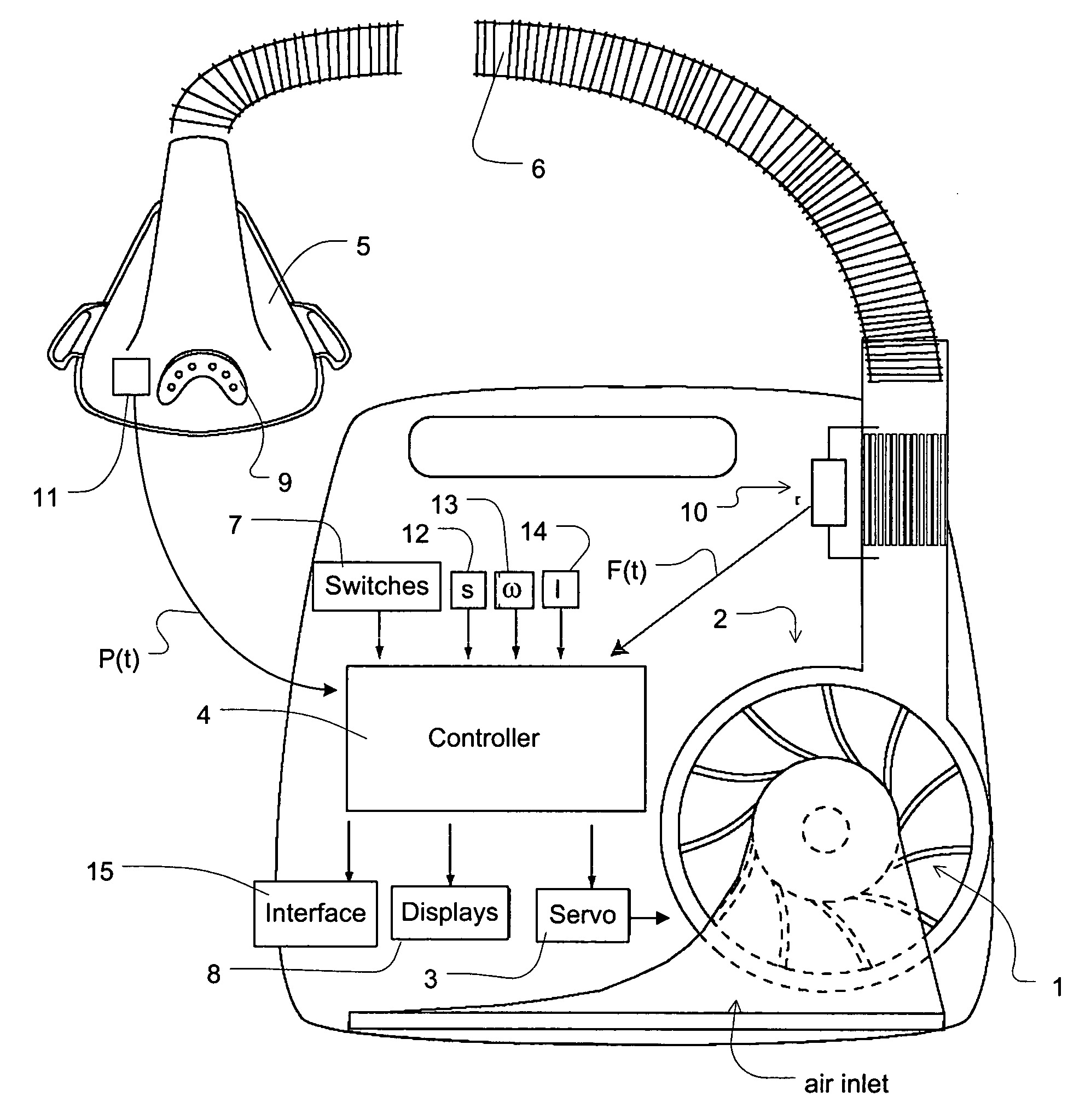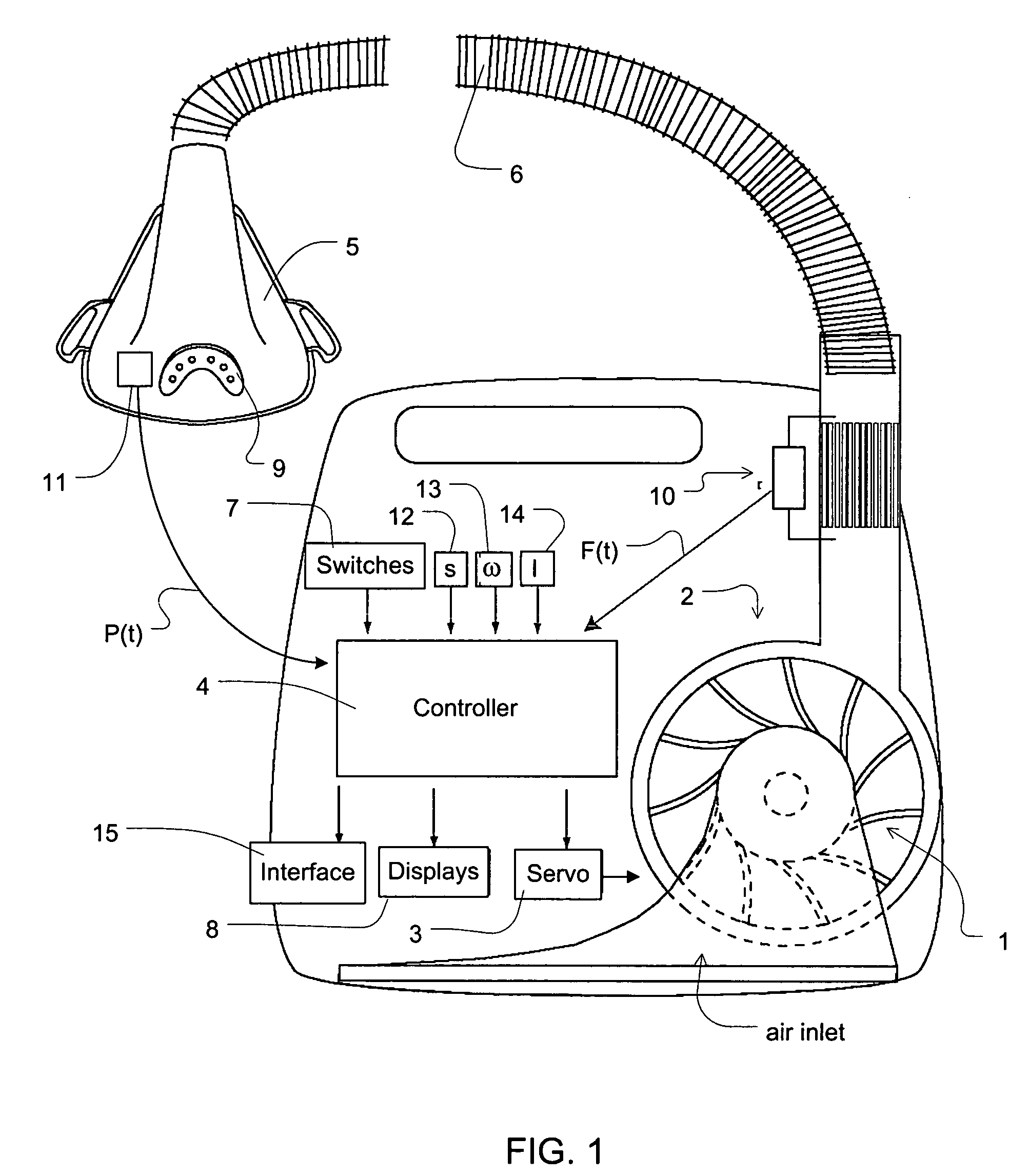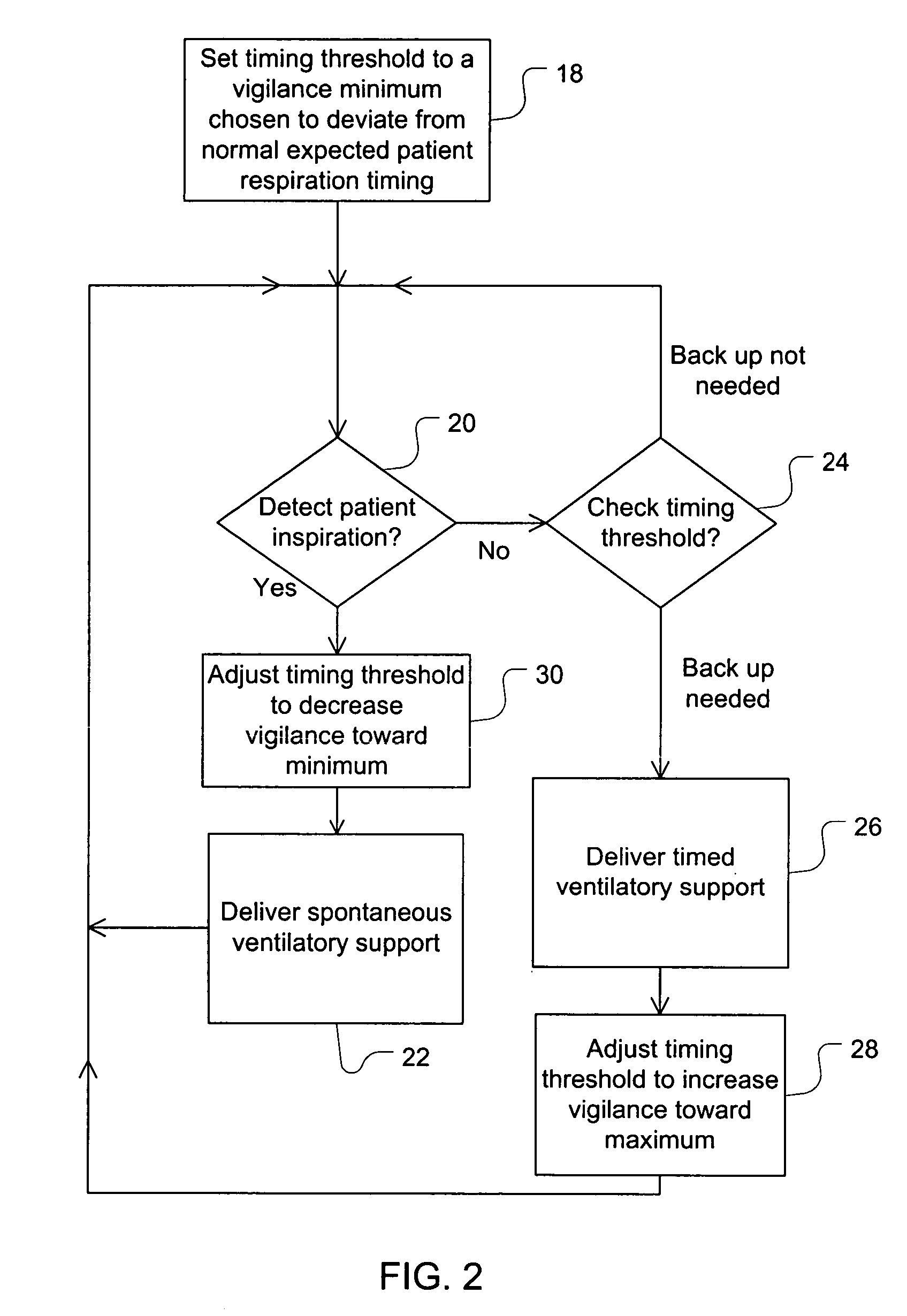Methods and apparatus for varying the back-up rate for a ventilator
a technology of back-up rate and ventilator, which is applied in the direction of mechanical equipment, valves, operating means/releasing devices, etc., can solve the problems of patient discomfort and ineffective ventilation, spontaneous/timed ventilators that cannot detect when patients are present, and the choice of the most appropriate back-up ra
- Summary
- Abstract
- Description
- Claims
- Application Information
AI Technical Summary
Benefits of technology
Problems solved by technology
Method used
Image
Examples
Embodiment Construction
[0026]FIG. 1 shows, by way of example, apparatus suitable for performing the invention. FIG. 1 shows an impeller 1 connected to an electric motor 2 under the control of a servo-controller 3 which is in turn under the control of a controller 4. In one form the controller 4 is a micro-processor based controller, such as an Intel '486 microprocessor. The impeller 1 and motor 2 form a blower. Air from the blower passes along a flexible conduit 6 to a patient interface such as a nasal mask 5 with a vent 9. While a nasal mask is illustrated, the invention may be used in conjunction with a nose-and-mouth mask, full face mask or endo-tracheal tube. A number of switches 7 are connected to the controller. A number of sensors are connected to the controller, namely: flow 10, pressure 11, snore 12, motor speed 13 and motor current 14. There are a set of displays 8 connected to the controller 4 for displaying information from the controller. There is an interface 15 to enable the controller 4 to...
PUM
 Login to View More
Login to View More Abstract
Description
Claims
Application Information
 Login to View More
Login to View More - R&D
- Intellectual Property
- Life Sciences
- Materials
- Tech Scout
- Unparalleled Data Quality
- Higher Quality Content
- 60% Fewer Hallucinations
Browse by: Latest US Patents, China's latest patents, Technical Efficacy Thesaurus, Application Domain, Technology Topic, Popular Technical Reports.
© 2025 PatSnap. All rights reserved.Legal|Privacy policy|Modern Slavery Act Transparency Statement|Sitemap|About US| Contact US: help@patsnap.com



